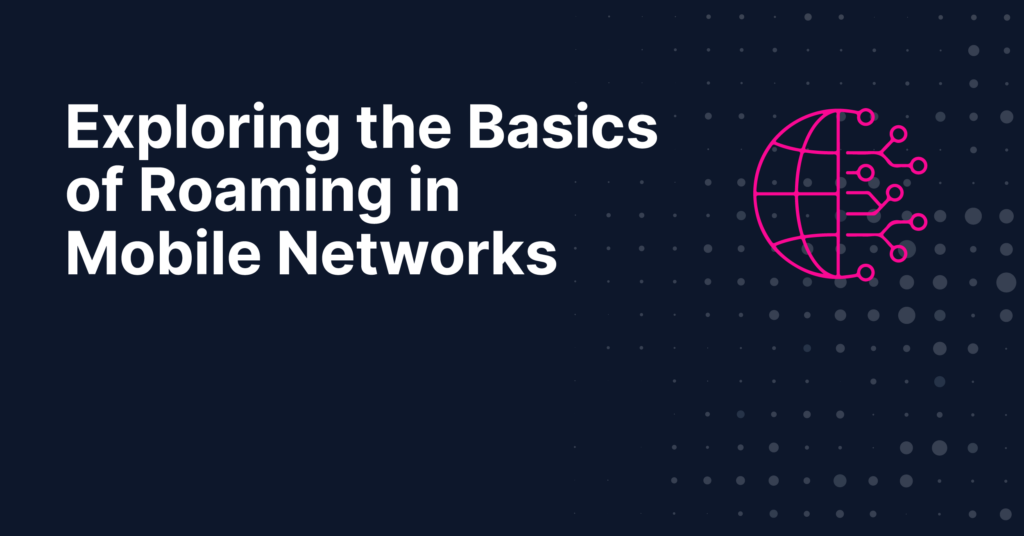In the realm of mobile networks, ‘roaming’ is a term that’s both ubiquitous and often misunderstood. This article aims to demystify the concept of roaming in mobile networks, offering you a clear and straightforward understanding of what roaming is, how it functions, and its significance for mobile users. Whether you’re a frequent traveler or simply curious about the mechanics of mobile networks, this article will equip you with essential knowledge about roaming, its various types, and the financial implications it carries. By the end of this exploration, you’ll have a comprehensive grasp of roaming and how to navigate it effectively in our globally connected world.
1. What is Roaming?
Roaming in the context of mobile networks refers to the ability of a cell phone or mobile device to connect and communicate through a network other than its home network. This occurs when a mobile user travels outside the geographical coverage area of their home network and their device automatically switches to a local network to maintain service continuity. Roaming ensures that users continue to access voice calls, text messages, and data services without interruption, even when they are in a different city or country. It is facilitated through agreements between different network operators, allowing users of one network to use the services of another network. This feature is crucial for maintaining seamless connectivity for mobile users who are on the move.
2. How Roaming Works
Roaming functions through a coordinated process between the home network (the original service provider of the user) and the visited network (the local network in the area where the user is traveling). Here’s a breakdown:
-
- Identification and Authentication: When a mobile user travels to a different area, their device sends a signal which is picked up by the local, or visited, network. The visited network identifies the user’s home network through their SIM card information and requests authentication.
- Agreement Check: The visited network checks if there is a roaming agreement with the user’s home network. If such an agreement exists, it allows the device to access its services.
- Service Provision: Once authenticated, the visited network provides the user with voice, SMS, and data services. The usage details are recorded by the visited network.
- Data Transfer: The visited network sends the usage records to the home network, which then calculates the charges based on the roaming rates and includes them in the user’s bill.
This process ensures that users can seamlessly access mobile services while away from their home network’s coverage area, thanks to the cooperation between different network providers.
3. Types of Roaming
Roaming in mobile networks can be classified into two main types:
-
- National Roaming: This occurs when a mobile user connects to a different network operator within the same country. National roaming is often used in areas where the user’s home network may have limited or no coverage, allowing access to services via another domestic network.
- International Roaming: This type of roaming happens when a user travels to a different country and connects to a local network operator there. International roaming enables users to maintain mobile services while abroad, but it typically involves higher costs due to the agreements between international network providers.
Both national and international roaming ensure users stay connected regardless of their location, although the costs and network arrangements may vary significantly between the two.
4. Roaming Charges and Fees
Roaming charges are additional costs incurred when a mobile user accesses services outside their home network’s coverage area. These charges vary based on several factors:
-
- Type of Roaming: International roaming generally incurs higher charges compared to national roaming due to the costs associated with using foreign network infrastructures.
- Service Usage: Charges depend on the type of service used while roaming – voice calls, text messaging, or data usage. Data roaming often results in higher charges.
- Roaming Agreements: The rates are influenced by the agreements between the user’s home network and the visited network. These agreements dictate the cost structure for different services.
- Billing Method: Some network operators charge on a per-minute, per-message, or per-megabyte basis, while others may offer fixed-rate daily or weekly roaming packages.
It’s important for users to understand their network’s roaming charges and consider opting for roaming packages or plans to manage costs effectively.
5. Impact of Roaming on Mobile Users
Roaming has both benefits and challenges that impact mobile users:
-
Benefits:
- Connectivity: Roaming ensures continuous mobile service when users travel, maintaining access to calls, texts, and data.
- Convenience: It offers the ease of using a single mobile number and device across different locations.
-
Challenges:
-
- Cost: Roaming, especially international, can incur significant additional charges, affecting the affordability of mobile services.
- Complexity: Understanding varied roaming charges and managing them can be complex for users.
- Service Quality: Users may experience variable service quality or limitations in roaming areas due to differing network capabilities.
Overall, while roaming enhances connectivity and convenience, it also poses challenges in terms of costs and service management for mobile users.
6. Tips for Managing Roaming Costs
Managing and minimizing roaming costs requires strategic planning. Here are some practical tips for mobile users:
-
- Understand Your Roaming Plan: Before traveling, check your mobile operator’s roaming charges and packages. Opt for a roaming plan that suits your needs.
- Use Wi-Fi Where Possible: Utilize free Wi-Fi networks for internet access, reducing the need for data roaming.
- Limit Data Usage: Disable automatic app updates and background data to conserve data usage while roaming.
- Monitor Usage: Keep track of your call, text, and data usage to avoid unexpected charges.
- Turn Off Roaming When Not Required: If not using mobile services, disable roaming to prevent incurring charges.
- Consider Local SIM Cards: For extended stays, using a local SIM card can be more cost-effective.
By following these tips, users can effectively manage their roaming costs and avoid bill shocks.
7. Conclusion
In summary, this article has provided a comprehensive overview of roaming in mobile networks, covering its definition, types, cost implications, and impact on mobile users. Roaming remains a crucial feature for maintaining connectivity and service continuity, especially in an increasingly globalized world. Despite the challenges, particularly in cost management, advancements in technology and evolving network agreements are continuously shaping the future of roaming, aiming for more user-friendly and cost-effective solutions. As mobile networks evolve, roaming is expected to become more seamless and integrated, further enhancing the mobile user experience on a global scale.
8. FAQs about Roaming in Mobile Networks
-
Why do I need roaming on my mobile?
Roaming is essential for maintaining continuous mobile network service when you’re outside your home network’s coverage area, especially when traveling. It allows your mobile device to connect to local networks, ensuring you can still make and receive calls, send and receive text messages, and access data services. Roaming is particularly vital for keeping connected with family, colleagues, or emergency services, providing peace of mind and convenience. By activating roaming, you ensure seamless communication, irrespective of your geographic location, which is crucial in today’s interconnected world.
-
What happens if mobile data is on roaming?
When mobile data is enabled during roaming, your device can access internet services through the visited network outside your home network’s coverage. This allows for continuous use of online services like emails, social media, and web browsing. However, it’s important to be aware that using mobile data while roaming can incur significantly higher charges compared to domestic usage, depending on your mobile plan and roaming agreements between operators. It’s advisable to check roaming rates or opt for specific roaming packages to manage costs effectively.
-
Is roaming the same as mobile data?
No, roaming and mobile data are not the same. Roaming refers to the ability of your mobile device to access network services outside of your home network’s coverage area, including voice calls, text messaging, and mobile data. Mobile data, on the other hand, specifically pertains to using the internet on your mobile device through your cellular network. When you use mobile data while roaming, you access the internet through a visited network, often at higher costs due to roaming charges.
-
Can roaming be used internationally?
Yes, roaming can be used internationally. International roaming enables your mobile device to access and use network services (voice calls, SMS, and mobile data) when traveling outside your home country, connecting you to local networks abroad. This service ensures that you remain connected, allowing seamless communication worldwide. However, it’s important to be aware of the potentially higher charges associated with international roaming and to check with your service provider for available plans to manage costs.
-
Can I receive calls without roaming?
Receiving calls without roaming activated is generally not possible when outside your mobile network’s coverage area. Roaming ensures your device connects to a local network in a different location, enabling you to receive calls. Without roaming enabled, your device cannot connect to these networks, and as a result, you may not receive calls. However, alternative communication methods such as Wi-Fi calling or VoIP services can be used to receive calls without traditional roaming, provided you have internet access.



